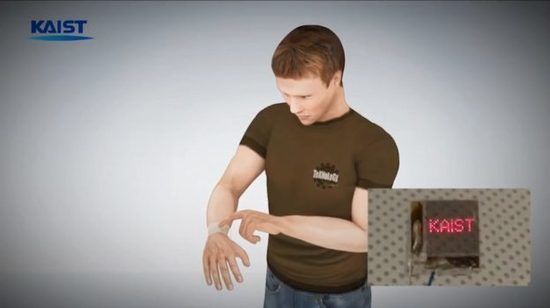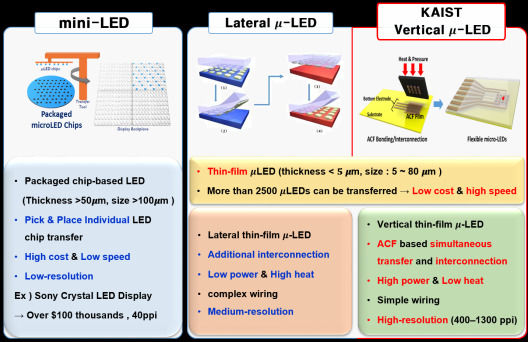It is reported that the research team led by Professor Lee Keon Jae of the Department of Materials Science and Engineering and Professor Daesoo Kim of the Department of Biological Sciences has developed flexible vertical Micro through the use of anisotropic conductive film-based transfer and interconnection technology. LED (micro-light emitting diode) (f-VLEDs) technology. At the same time, the team successfully controlled animal behavior through the optogenetic stimulation of this Micro LED technology.

Thanks to its ultra-low power consumption, fast response speed and superior flexibility, the flexible Micro LED has become a powerful candidate for next-generation displays. However, the previous Micro LED technology faced key problems such as poor component efficiency, low thermal reliability, and insufficient high-resolution Micro LED display interconnect technology.
The report stated that the research team designed a new transfer device and fabricated an f-VLED array (50×50) using the precise alignment of ACF bonding technology using synchronous transfer and interconnect technology. Compared to lateral Micro LEDs, these f-VLEDs are three times more optically power-densible (30 mW/mm2) and improve thermal reliability and extended operating life by reducing the amount of heat generated inside the thin-film LEDs.

(Source:KAIST)
It is reported that these f-VLEDs (thickness: 5 microns; size: 80 microns or less) are suitable for optogenetic control of neuronal cells and brain behavior. In contrast to electrical stimulation that triggers all neurons in the brain, optogenetic control stimulates specific excitatory or inhibitory neurons in the local cortical region of the brain, facilitating accurate analysis, as well as mapping and neuronal regulation of high-resolution animal brains.
During the study, the team implanted the newly invented f-VLEDs into a narrow space between the skull and the surface of the brain and successfully controlled the mouse by illuminating motor neurons in the deep two-dimensional cortical region of the brain surface. the behavior of.
According to Professor Li, these flexible vertical Micro LEDs can be used in low-power smart watches, mobile device displays and wearable lighting products. In addition, such flexible optoelectronic components are also suitable for biomedical applications such as brain science, phototherapy, and contact lens biosensors.
It is understood that the research titled "Optogenetics Control of Limb Movement on the Surface of the Brain Through Flexible Vertical Light Emitting Diodes" has been published in the February 2018 issue of Nano Energy. According to the news, Professor Li recently established a startup company based on Micro LED technology (FRONICS), and is looking for a global partner to achieve the commercialization of Micro LED.

Led Wall Display,Outdoor Advertising Sign Banner,Advertising Digital Signs Banner,Outdoor Signs Banner
APIO ELECTRONIC CO.,LTD , https://www.displayapio.com